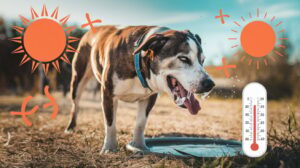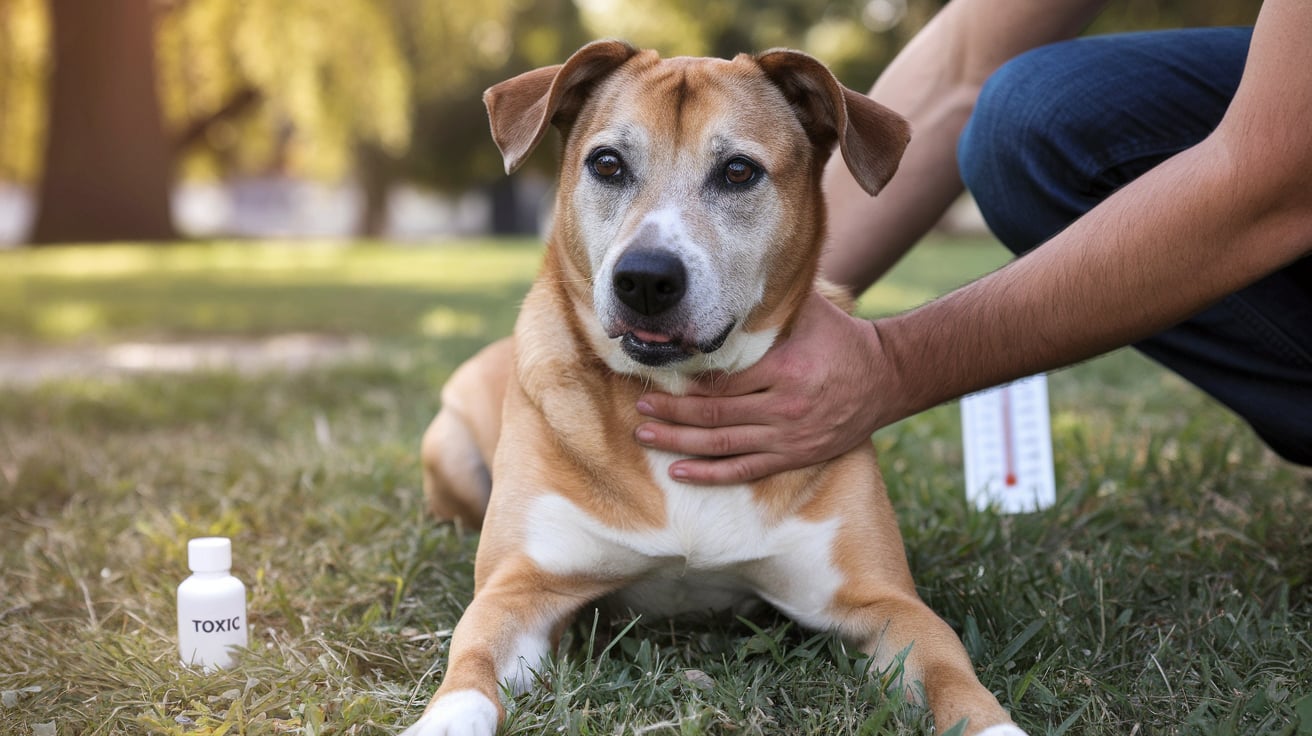Introduction
As a veterinary doctor, one of the most common concerns I encounter from dog owners is “Why Is My Dog Foaming at the Mouth? Dogs, being our loyal companions, can experience various health problems that often manifest through specific symptoms. Understanding these symptoms is crucial for any dog owner, as it can significantly impact their pet’s well-being. Recognizing the signs early can lead to prompt treatment, which can make a difference in the recovery process.
The importance of being aware of your dog’s symptoms cannot be overstated. Dogs can’t communicate their discomfort in the same way humans can, so it’s up to us to observe any changes in their behavior, appetite, or energy levels. This understanding helps in identifying potential health issues before they escalate, ensuring that our furry friends receive the care they need as soon as possible.
The aim of this article is to provide dog owners with essential information about common health issues, including the symptoms to look out for and the actions to take if they notice any concerning signs. By being informed and proactive, you can ensure your dog leads a happy and healthy life.
Understanding Foaming at the Mouth
Foaming at the mouth in dogs refers to the presence of excessive, frothy saliva that gathers around the dog’s mouth, often creating a bubbly appearance. This condition can be distressing for both the dog and its owner, especially if it appears suddenly. The foam is usually a result of a combination of factors, including increased saliva production and the mixing of that saliva with air as the dog breathes rapidly. While some foaming can be benign and temporary, it can also indicate more serious health issues that require prompt attention.
It’s essential to distinguish between foaming at the mouth and normal drooling, as these two conditions are quite different. Normal drooling is common in many dogs, particularly those with loose lips or larger jowls, and is often a natural response to food, excitement, or heat. In contrast, foaming at the mouth is characterized by a thick, bubbly substance rather than the clear, watery saliva associated with drooling. While drooling is typically harmless and expected in certain situations, foaming can signal a problem that may need to be addressed, such as poisoning, heatstroke, or rabies.
Recognizing the difference between these two conditions can help pet owners react appropriately. If you observe your dog foaming at the mouth, it’s crucial to monitor other symptoms, such as lethargy, vomiting, or unusual behavior, and consult your veterinarian if any concerning signs arise. Understanding these distinctions empowers dog owners to take swift action to ensure their pet’s health and safety.
Common Causes of Foaming at the Mouth
Understanding the various reasons behind foaming at the mouth in dogs is essential for every pet owner. Here are some common causes, their symptoms, and the necessary actions to take:
Rabies
Dogs are among the mammals whose nervous systems are impacted by the viral virus known as rabies. This disease is transmitted through the saliva of an infected animal, typically through bites. Symptoms of rabies can include aggression, disorientation, excessive drooling, and foaming at the mouth. Dogs may experience paralysis, swallowing difficulties, and behavioral changes as the condition worsens.

The importance of vaccinating your dog against rabies cannot be overstated. Vaccination is the most effective way to protect your pet and others from this fatal disease. Ensuring your dog receives regular vaccinations not only safeguards their health but also complies with local laws regarding pet ownership.
Poisoning or Toxicity
Many common household items can be toxic to dogs, leading to symptoms such as foaming at the mouth. Items like chocolate, grapes, onions, and certain plants can cause serious health issues when ingested. In addition to foaming, signs of poisoning may include vomiting, diarrhea, lethargy, and tremors.
It’s important to seek veterinarian attention right away if you think your dog may have consumed something harmful. The higher the dog’s chances of recovering, the earlier it receives therapy. Keeping potentially harmful substances out of reach and being aware of toxic foods can help prevent such incidents.
Seizures
Seizures can also cause foaming at the mouth due to the intense muscle contractions and rapid breathing associated with this condition. During a seizure, a dog may lose control of its body, which can lead to excessive drooling and foaming. Other symptoms to watch for include shaking, disorientation, or an inability to respond to commands.
If your dog experiences a seizure, it’s important to remain calm and avoid placing your hands near their mouth, as they may accidentally bite you. After the seizure, provide a quiet, safe space for your dog to recover and consult your veterinarian to discuss the incident and any potential underlying conditions.
Heatstroke
Heatstroke occurs when a dog’s body temperature rises to dangerous levels, often due to prolonged exposure to high temperatures or excessive exercise. Overheating can lead to foaming at the mouth as the dog struggles to cool itself down. Symptoms of heatstroke in dogs can include panting, drooling, weakness, vomiting, and confusion.

Preventing heatstroke involves ensuring your dog has access to shade and fresh water, especially during hot weather. If you suspect your dog is suffering from heatstroke, it’s vital to act quickly by moving them to a cooler location and contacting a veterinarian for further guidance.
Kennel Cough
Kennel cough is a contagious respiratory disease that can cause a range of symptoms, including a harsh cough and foaming at the mouth. This condition is often seen in dogs that have been in close quarters with others, such as at boarding facilities or dog parks. Other symptoms may include a runny nose and lethargy.
If your dog shows signs of kennel cough, it’s important to isolate them from other dogs to prevent the spread of the illness. A veterinarian can provide guidance on treatment options, which may include cough suppressants or antibiotics if a secondary infection is present.
Anxiety or Stress
Stress and anxiety can manifest in dogs in various ways, including foaming at the mouth. Dogs may become anxious in situations like loud noises, strange places, or being apart from their owners. Behavioral signs of stress may include pacing, whining, excessive drooling, and changes in appetite or bathroom habits.
If you notice your dog exhibiting signs of anxiety, it’s essential to address the underlying cause. Providing a safe, calm environment and using positive reinforcement techniques can help alleviate stress. In some cases, consulting a veterinarian or a professional dog trainer may be beneficial for managing your dog’s anxiety.
How to Handle Your Dog’s Mouth Foaming
When you notice your dog foaming at the mouth, it’s essential to remain calm and take appropriate steps to address the situation. Here’s what you should do:
Immediate Actions
The first step when you see your dog foaming at the mouth is to keep them calm. Anxiety can exacerbate the condition, so soothing your dog with a gentle voice and reassuring presence is crucial. Avoid sudden movements or loud noises that may heighten their stress.

It’s important to refrain from placing your hands near your dog’s mouth during this time. If your dog is experiencing a seizure, for example, they may inadvertently bite you, thinking you’re a threat. Instead, create a safe space around your dog, allowing them to be comfortable while you assess the situation.
Monitoring Symptoms
While you prepare to take your dog to the veterinarian, monitor their symptoms closely. Take note of any other signs you observe, such as difficulty breathing, lethargy, vomiting, or unusual behavior. This information will be helpful for the vet in diagnosing the problem. Additionally, try to determine if your dog has been exposed to any potential toxins, experienced a recent injury, or been in a stressful situation, as these details can provide further context for their condition.
Prevention Tips
To minimize the chances of your dog experiencing foaming at the mouth in the future, it’s important to implement some prevention tips. Regular veterinary check-ups are vital for ensuring your dog’s overall health and early detection of any potential issues. During these visits, your vet can provide guidance on maintaining your dog’s well-being, including dietary recommendations and exercise needs.
Vaccination is another key aspect of prevention. Ensure your dog is up to date on vaccinations, particularly for rabies and other communicable diseases. Keeping harmful household items out of reach and being mindful of your dog’s environment can also prevent exposure to toxins and stressors. By staying proactive about your dog’s health, you can help protect them from potentially serious conditions that could lead to foaming at the mouth.
Conclusion
In conclusion, understanding foaming at the mouth in dogs is crucial for any pet owner. Recognizing the symptoms and potential causes can significantly impact your dog’s health and well-being. Whether it’s a sign of a serious condition like rabies or a temporary issue like anxiety, being aware of these factors allows you to respond swiftly and effectively. By understanding what foaming at the mouth means, you can take proactive steps to safeguard your pet’s health.
It’s essential to be proactive about your dog’s health through regular veterinary visits and maintaining a healthy lifestyle. These check-ups not only help in the early detection of potential health issues but also provide you with valuable insights into your dog’s specific needs. Additionally, staying informed about common canine health concerns empowers you as a pet owner to make better decisions for your furry companion.
As a call to action, prioritize your dog’s health by scheduling regular vet visits and continuing to educate yourself on canine health issues. Your vigilance and care can make a world of difference in ensuring your dog leads a happy, healthy life.
FAQs
If my dog is foaming at the mouth, what should I do?
If your dog is foaming at the mouth, stay calm and avoid placing your hands near their mouth. Maintain your dog’s comfort and composure while keeping a careful eye on their symptoms. If the foaming persists or is accompanied by other concerning symptoms, take your dog to the veterinarian immediately.
What are the common causes of dogs’ mouth foaming?
Common causes of foaming at the mouth in dogs include rabies, poisoning or toxicity, seizures, heatstroke, kennel cough, and anxiety or stress. Each of these conditions requires different responses and potential treatments, so it’s essential to identify any accompanying symptoms.
How can I distinguish between regular drooling and oral foaming?
Normal drooling is usually clear and runny, often associated with food or excitement. Foaming at the mouth, on the other hand, appears thick and bubbly and can be a sign of a health issue. If your dog is foaming, it’s essential to observe other symptoms and consult a veterinarian if necessary.
Is mouth foaming always an indication of a major issue?
Not necessarily. While foaming at the mouth can indicate a serious health issue, such as rabies or poisoning, it can also result from less severe conditions, like anxiety or temporary stress. It’s important to assess your dog’s overall behavior and symptoms to determine the severity of the situation.
How can I stop my dog from foaming from his mouth?
Preventive measures include keeping potentially toxic substances out of reach, ensuring your dog is up to date on vaccinations, and providing regular veterinary check-ups. Additionally, managing your dog’s environment to minimize stress and anxiety can also help reduce the risk of foaming at the mouth.
When should I take my dog to the vet because of foaming in his mouth?
You should take your dog to the vet if the foaming persists, is accompanied by other serious symptoms (like vomiting, lethargy, or difficulty breathing), or if you suspect they may have ingested something toxic. It’s always advisable to err on the side of caution when it comes to the health of your pet.
